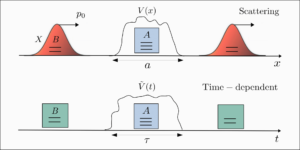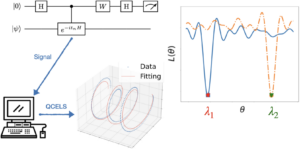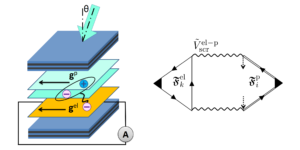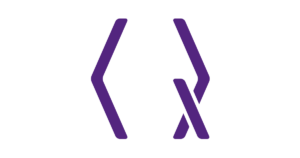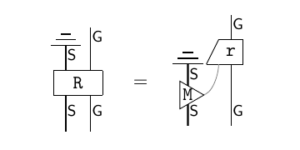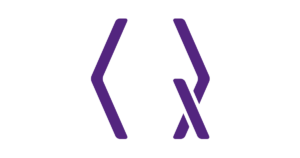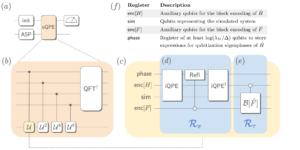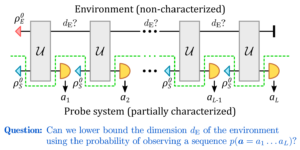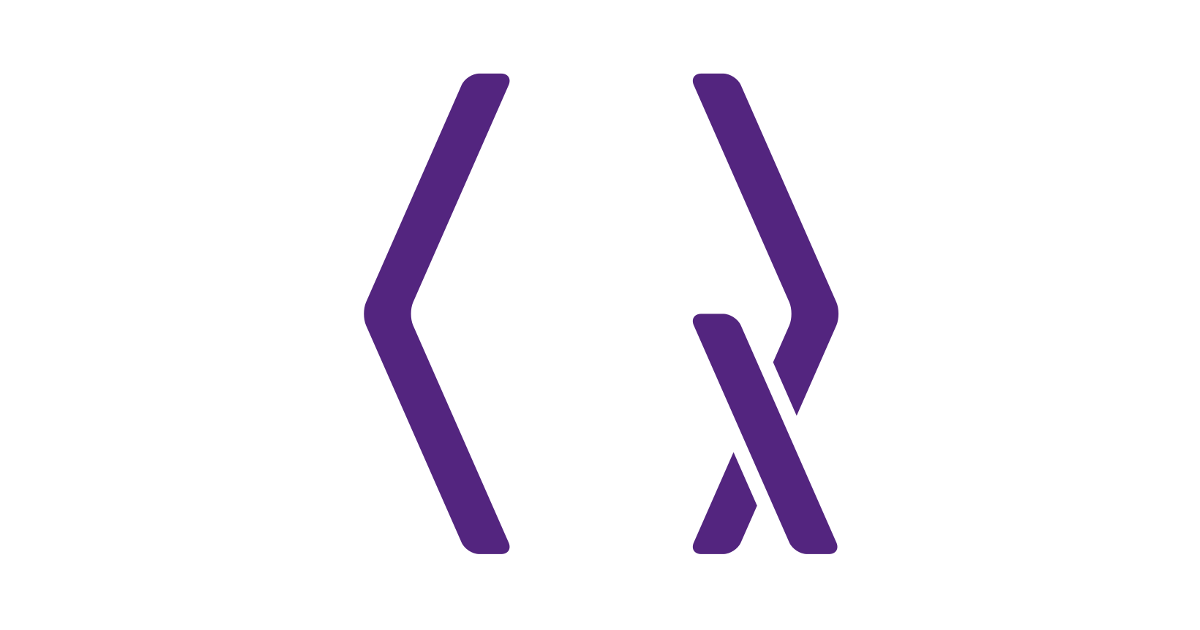
1Google Quantum AI, Santa Barbara, California 93117, USA
2Google Quantum AI, Seattle, Washington 98103, USA
Find this paper interesting or want to discuss? Scite or leave a comment on SciRate.
Abstract
The typical time-independent view of quantum error correction (QEC) codes hides significant freedom in the decomposition into circuits that are executable on hardware. Using the concept of detecting regions, we design time-dynamic QEC circuits directly instead of designing static QEC codes to decompose into circuits. In particular, we improve on the standard circuit constructions for the surface code, presenting new circuits that can embed on a hexagonal grid instead of a square grid, that can use ISWAP gates instead of CNOT or CZ gates, that can exchange qubit data and measure roles, and that move logical patches around the physical qubit grid while executing. All these constructions use no additional entangling gate layers and display essentially the same logical performance, having teraquop footprints within 25% of the standard surface code circuit. We expect these circuits to be of great interest to quantum hardware engineers, because they achieve essentially the same logical performance as standard surface code circuits while relaxing demands on hardware.
Popular summary
► BibTeX data
► References
[1] Scott Aaronson “Introduction to Quantum Information Science II Lecture Notes” (2022).
https://www.scottaaronson.com/qisii.pdf
[2] Scott Aaronsonand Daniel Gottesman “Improved simulation of stabilizer circuits” Physical Review A 70, 052328 (2004).
https://doi.org/10.1103/PhysRevA.70.052328
[3] Frank Arute, Kunal Arya, Ryan Babbush, Dave Bacon, Joseph C. Bardin, Rami Barends, Rupak Biswas, Sergio Boixo, Fernando G. S. L. Brandao, David A. Buell, Brian Burkett, Yu Chen, Zijun Chen, Ben Chiaro, Roberto Collins, William Courtney, Andrew Dunsworth, Edward Farhi, Brooks Foxen, Austin Fowler, Craig Gidney, Marissa Giustina, Rob Graff, Keith Guerin, Steve Habegger, Matthew P. Harrigan, Michael J. Hartmann, Alan Ho, Markus Hoffmann, Trent Huang, Travis S. Humble, Sergei V. Isakov, Evan Jeffrey, Zhang Jiang, Dvir Kafri, Kostyantyn Kechedzhi, Julian Kelly, Paul V. Klimov, Sergey Knysh, Alexander Korotkov, Fedor Kostritsa, David Landhuis, Mike Lindmark, Erik Lucero, Dmitry Lyakh, Salvatore Mandrà, Jarrod R. McClean, Matthew McEwen, Anthony Megrant, Xiao Mi, Kristel Michielsen, Masoud Mohseni, Josh Mutus, Ofer Naaman, Matthew Neeley, Charles Neill, Murphy Yuezhen Niu, Eric Ostby, Andre Petukhov, John C. Platt, Chris Quintana, Eleanor G. Rieffel, Pedram Roushan, Nicholas C. Rubin, Daniel Sank, Kevin J. Satzinger, Vadim Smelyanskiy, Kevin J. Sung, Matthew D. Trevithick, Amit Vainsencher, Benjamin Villalonga, Theodore White, Z. Jamie Yao, Ping Yeh, Adam Zalcman, Hartmut Neven, and John M. Martinis, “Quantum supremacy using a programmable superconducting processor” Nature 574, 505–510 (2019) Publisher: Nature Publishing Group.
https://doi.org/10.1038/s41586-019-1666-5
http://www.nature.com/articles/s41586-019-1666-5
[4] David Aasen, Zhenghan Wang, and Matthew B. Hastings, “Adiabatic paths of Hamiltonians, symmetries of topological order, and automorphism codes” (2022) Publisher: arXiv Version Number: 2.
https://doi.org/10.48550/ARXIV.2203.11137
https://arxiv.org/abs/2203.11137
[5] Dave Bacon “Operator Quantum Error Correcting Subsystems for Self-Correcting Quantum Memories” (2005) Publisher: arXiv Version Number: 4.
https://doi.org/10.48550/ARXIV.QUANT-PH/0506023
https://arxiv.org/abs/quant-ph/0506023
[6] Natalie C. Brownand Kenneth R. Brown “Leakage mitigation for quantum error correction using a mixed qubit scheme” Physical Review A 100, 032325 (2019) Publisher: American Physical Society.
https://doi.org/10.1103/PhysRevA.100.032325
[7] Nikolas P. Breuckmannand Jens N. Eberhardt “Balanced Product Quantum Codes” (2020) Publisher: arXiv Version Number: 3.
https://doi.org/10.48550/ARXIV.2012.09271
https://arxiv.org/abs/2012.09271
[8] Nikolas P. Breuckmannand Jens Niklas Eberhardt “Quantum Low-Density Parity-Check Codes” PRX Quantum 2, 040101 (2021).
https://doi.org/10.1103/PRXQuantum.2.040101
[9] Sergey Bravyiand Alexei Kitaev “Universal quantum computation with ideal Clifford gates and noisy ancillas” Physical Review A 71, 022316 (2005).
https://doi.org/10.1103/PhysRevA.71.022316
[10] Nouédyn Baspinand Anirudh Krishna “Connectivity constrains quantum codes” Quantum 6, 711 (2022).
https://doi.org/10.22331/q-2022-05-13-711
https://quantum-journal.org/papers/q-2022-05-13-711/
[11] S. B. Bravyiand A. Yu. Kitaev “Quantum codes on a lattice with boundary” (1998) Publisher: arXiv Version Number: 1.
https://doi.org/10.48550/ARXIV.QUANT-PH/9811052
https://arxiv.org/abs/quant-ph/9811052
[12] H. Bombinand M. A. Martin-Delgado “Optimal resources for topological two-dimensional stabilizer codes: Comparative study” Physical Review A 76, 012305 (2007).
https://doi.org/10.1103/PhysRevA.76.012305
[13] Hector Bombin, Chris Dawson, Ryan V. Mishmash, Naomi Nickerson, Fernando Pastawski, and Sam Roberts, “Logical blocks for fault-tolerant topological quantum computation” (2021) Publisher: arXiv Version Number: 1.
https://doi.org/10.48550/ARXIV.2112.12160
https://arxiv.org/abs/2112.12160
[14] Hector Bombin, Daniel Litinski, Naomi Nickerson, Fernando Pastawski, and Sam Roberts, “Unifying flavors of fault tolerance with the ZX calculus” (2023) Publisher: arXiv Version Number: 1.
https://doi.org/10.48550/ARXIV.2303.08829
https://arxiv.org/abs/2303.08829
[15] Héctor Bombín “Single-Shot Fault-Tolerant Quantum Error Correction” Physical Review X 5, 031043 (2015).
https://doi.org/10.1103/PhysRevX.5.031043
[16] J. Pablo Bonilla Ataides, David K. Tuckett, Stephen D. Bartlett, Steven T. Flammia, and Benjamin J. Brown, “The XZZX surface code” Nature Communications 12, 2172 (2021).
https://doi.org/10.1038/s41467-021-22274-1
http://www.nature.com/articles/s41467-021-22274-1
[17] Sergey Bravyi, Guillaume Duclos-Cianci, David Poulin, and Martin Suchara, “Subsystem surface codes with three-qubit check operators” (2012) Publisher: arXiv Version Number: 2.
https://doi.org/10.48550/ARXIV.1207.1443
https://arxiv.org/abs/1207.1443
[18] F. Battistel, B.M. Varbanov, and B.M. Terhal, “Hardware-Efficient Leakage-Reduction Scheme for Quantum Error Correction with Superconducting Transmon Qubits” PRX Quantum 2, 030314 (2021).
https://doi.org/10.1103/PRXQuantum.2.030314
[19] Christopher Chamberlandand Andrew W. Cross “Fault-tolerant magic state preparation with flag qubits” Quantum 3, 143 (2019).
https://doi.org/10.22331/q-2019-05-20-143
https://quantum-journal.org/papers/q-2019-05-20-143/
[20] Christopher Chamberland, Guanyu Zhu, Theodore J. Yoder, Jared B. Hertzberg, and Andrew W. Cross, “Topological and Subsystem Codes on Low-Degree Graphs with Flag Qubits” Physical Review X 10, 011022 (2020).
https://doi.org/10.1103/PhysRevX.10.011022
[21] Zijun Chen, Julian Kelly, Chris Quintana, R. Barends, B. Campbell, Yu Chen, B. Chiaro, A. Dunsworth, A. G. Fowler, E. Lucero, E. Jeffrey, A. Megrant, J. Mutus, M. Neeley, C. Neill, P. J. J. O’Malley, P. Roushan, D. Sank, A. Vainsencher, J. Wenner, T. C. White, A. N. Korotkov, and John M. Martinis, “Measuring and Suppressing Quantum State Leakage in a Superconducting Qubit” Physical Review Letters 116, 020501 (2016) Publisher: American Physical Society.
https://doi.org/10.1103/PhysRevLett.116.020501
[22] A. D. Córcoles, Jay M. Gambetta, Jerry M. Chow, John A. Smolin, Matthew Ware, Joel Strand, B. L. T. Plourde, and M. Steffen, “Process verification of two-qubit quantum gates by randomized benchmarking” Physical Review A 87, 030301 (2013).
https://doi.org/10.1103/PhysRevA.87.030301
[23] Rui Chaoand Ben W. Reichardt “Quantum Error Correction with Only Two Extra Qubits” Physical Review Letters 121, 050502 (2018).
https://doi.org/10.1103/PhysRevLett.121.050502
[24] Rui Chaoand Ben W. Reichardt “Flag Fault-Tolerant Error Correction for any Stabilizer Code” PRX Quantum 1, 010302 (2020).
https://doi.org/10.1103/PRXQuantum.1.010302
[25] A. R. Calderbankand Peter W. Shor “Good quantum error-correcting codes exist” Physical Review A 54, 1098–1105 (1996).
https://doi.org/10.1103/PhysRevA.54.1098
[26] Eric Dennis, Alexei Kitaev, Andrew Landahl, and John Preskill, “Topological quantum memory” Journal of Mathematical Physics 43, 4452–4505 (2002).
https://doi.org/10.1063/1.1499754
[27] Nicolas Delfosseand Adam Paetznick “Spacetime codes of Clifford circuits” (2023) Publisher: arXiv Version Number: 1.
https://doi.org/10.48550/ARXIV.2304.05943
https://arxiv.org/abs/2304.05943
[28] David P. DiVincenzoand Firat Solgun “Multi-qubit parity measurement in circuit quantum electrodynamics” (2012) Publisher: arXiv Version Number: 2.
https://doi.org/10.48550/ARXIV.1205.1910
https://arxiv.org/abs/1205.1910
[29] Austin G. Fowler, Matteo Mariantoni, John M. Martinis, and Andrew N. Cleland, “Surface codes: Towards practical large-scale quantum computation” Physical Review A 86, 032324 (2012) Publisher: American Physical Society.
https://doi.org/10.1103/physreva.86.032324
https://link.aps.org/doi/10.1103/PhysRevA.86.032324
[30] Austin G. Fowler “Coping with qubit leakage in topological codes” Physical Review A 88, 042308 (2013) Publisher: American Physical Society.
https://doi.org/10.1103/PhysRevA.88.042308
[31] Austin G. Fowler “Optimal complexity correction of correlated errors in the surface code” (2013) Publisher: arXiv Version Number: 1.
https://doi.org/10.48550/ARXIV.1310.0863
https://arxiv.org/abs/1310.0863
[32] B. Foxen, C. Neill, A. Dunsworth, P. Roushan, B. Chiaro, A. Megrant, J. Kelly, Zijun Chen, K. Satzinger, R. Barends, F. Arute, K. Arya, R. Babbush, D. Bacon, J. C. Bardin, S. Boixo, D. Buell, B. Burkett, Yu Chen, R. Collins, E. Farhi, A. Fowler, C. Gidney, M. Giustina, R. Graff, M. Harrigan, T. Huang, S. V. Isakov, E. Jeffrey, Z. Jiang, D. Kafri, K. Kechedzhi, P. Klimov, A. Korotkov, F. Kostritsa, D. Landhuis, E. Lucero, J. McClean, M. McEwen, X. Mi, M. Mohseni, J. Y. Mutus, O. Naaman, M. Neeley, M. Niu, A. Petukhov, C. Quintana, N. Rubin, D. Sank, V. Smelyanskiy, A. Vainsencher, T. C. White, Z. Yao, P. Yeh, A. Zalcman, H. Neven, J. M. Martinis, and Google AI Quantum, “Demonstrating a Continuous Set of Two-qubit Gates for Near-term Quantum Algorithms” Physical Review Letters 125, 120504 (2020) _eprint: 2001.08343.
https://doi.org/10.1103/PhysRevLett.125.120504
[33] Yuichiro Fujiwara “Ability of stabilizer quantum error correction to protect itself from its own imperfection” Physical Review A 90, 062304 (2014).
https://doi.org/10.1103/PhysRevA.90.062304
[34] Craig Gidneyand Martin Ekerå “How to factor 2048 bit RSA integers in 8 hours using 20 million noisy qubits” Quantum 5, 433 (2021) Publisher: Verein zur Förderung des Open Access Publizierens in den Quantenwissenschaften.
https://doi.org/10.22331/q-2021-04-15-433
https://quantum-journal.org/papers/q-2021-04-15-433/
[35] Joydip Ghoshand Austin G. Fowler “Leakage-resilient approach to fault-tolerant quantum computing with superconducting elements” Physical Review A 91, 020302 (2015).
https://doi.org/10.1103/PhysRevA.91.020302
[36] Joydip Ghosh, Austin G. Fowler, John M. Martinis, and Michael R. Geller, “Understanding the effects of leakage in superconducting quantum-error-detection circuits” Physical Review A 88, 062329 (2013).
https://doi.org/10.1103/PhysRevA.88.062329
[37] Craig Gidney “Stim: a fast stabilizer circuit simulator” Quantum 5, 497 (2021).
https://doi.org/10.22331/q-2021-07-06-497
https://quantum-journal.org/papers/q-2021-07-06-497/
[38] Craig Gidney “A Pair Measurement Surface Code on Pentagons” (2022).
https://doi.org/10.48550/ARXIV.2206.12780
https://arxiv.org/abs/2206.12780
[39] Craig Gidney, Michael Newman, and Matt McEwen, “Benchmarking the Planar Honeycomb Code” Quantum 6, 813 (2022).
https://doi.org/10.22331/q-2022-09-21-813
https://quantum-journal.org/papers/q-2022-09-21-813/
[40] Google Quantum AI, Zijun Chen, Kevin J. Satzinger, Juan Atalaya, Alexander N. Korotkov, Andrew Dunsworth, Daniel Sank, Chris Quintana, Matt McEwen, Rami Barends, Paul V. Klimov, Sabrina Hong, Cody Jones, Andre Petukhov, Dvir Kafri, Sean Demura, Brian Burkett, Craig Gidney, Austin G. Fowler, Alexandru Paler, Harald Putterman, Igor Aleiner, Frank Arute, Kunal Arya, Ryan Babbush, Joseph C. Bardin, Andreas Bengtsson, Alexandre Bourassa, Michael Broughton, Bob B. Buckley, David A. Buell, Nicholas Bushnell, Benjamin Chiaro, Roberto Collins, William Courtney, Alan R. Derk, Daniel Eppens, Catherine Erickson, Edward Farhi, Brooks Foxen, Marissa Giustina, Ami Greene, Jonathan A. Gross, Matthew P. Harrigan, Sean D. Harrington, Jeremy Hilton, Alan Ho, Trent Huang, William J. Huggins, L. B. Ioffe, Sergei V. Isakov, Evan Jeffrey, Zhang Jiang, Kostyantyn Kechedzhi, Seon Kim, Alexei Kitaev, Fedor Kostritsa, David Landhuis, Pavel Laptev, Erik Lucero, Orion Martin, Jarrod R. McClean, Trevor McCourt, Xiao Mi, Kevin C. Miao, Masoud Mohseni, Shirin Montazeri, Wojciech Mruczkiewicz, Josh Mutus, Ofer Naaman, Matthew Neeley, Charles Neill, Michael Newman, Murphy Yuezhen Niu, Thomas E. O’Brien, Alex Opremcak, Eric Ostby, Bálint Pató, Nicholas Redd, Pedram Roushan, Nicholas C. Rubin, Vladimir Shvarts, Doug Strain, Marco Szalay, Matthew D. Trevithick, Benjamin Villalonga, Theodore White, Z. Jamie Yao, Ping Yeh, Juhwan Yoo, Adam Zalcman, Hartmut Neven, Sergio Boixo, Vadim Smelyanskiy, Yu Chen, Anthony Megrant, and Julian Kelly, “Exponential suppression of bit or phase errors with cyclic error correction” Nature 595, 383–387 (2021) _eprint: 2102.06132.
https://doi.org/10.1038/s41586-021-03588-y
http://www.nature.com/articles/s41586-021-03588-y
[41] Google Quantum AI, Rajeev Acharya, Igor Aleiner, Richard Allen, Trond I. Andersen, Markus Ansmann, Frank Arute, Kunal Arya, Abraham Asfaw, Juan Atalaya, Ryan Babbush, Dave Bacon, Joseph C. Bardin, Joao Basso, Andreas Bengtsson, Sergio Boixo, Gina Bortoli, Alexandre Bourassa, Jenna Bovaird, Leon Brill, Michael Broughton, Bob B. Buckley, David A. Buell, Tim Burger, Brian Burkett, Nicholas Bushnell, Yu Chen, Zijun Chen, Ben Chiaro, Josh Cogan, Roberto Collins, Paul Conner, William Courtney, Alexander L. Crook, Ben Curtin, Dripto M. Debroy, Alexander Del Toro Barba, Sean Demura, Andrew Dunsworth, Daniel Eppens, Catherine Erickson, Lara Faoro, Edward Farhi, Reza Fatemi, Leslie Flores Burgos, Ebrahim Forati, Austin G. Fowler, Brooks Foxen, William Giang, Craig Gidney, Dar Gilboa, Marissa Giustina, Alejandro Grajales Dau, Jonathan A. Gross, Steve Habegger, Michael C. Hamilton, Matthew P. Harrigan, Sean D. Harrington, Oscar Higgott, Jeremy Hilton, Markus Hoffmann, Sabrina Hong, Trent Huang, Ashley Huff, William J. Huggins, Lev B. Ioffe, Sergei V. Isakov, Justin Iveland, Evan Jeffrey, Zhang Jiang, Cody Jones, Pavol Juhas, Dvir Kafri, Kostyantyn Kechedzhi, Julian Kelly, Tanuj Khattar, Mostafa Khezri, Mária Kieferová, Seon Kim, Alexei Kitaev, Paul V. Klimov, Andrey R. Klots, Alexander N. Korotkov, Fedor Kostritsa, John Mark Kreikebaum, David Landhuis, Pavel Laptev, Kim-Ming Lau, Lily Laws, Joonho Lee, Kenny Lee, Brian J. Lester, Alexander Lill, Wayne Liu, Aditya Locharla, Erik Lucero, Fionn D. Malone, Jeffrey Marshall, Orion Martin, Jarrod R. McClean, Trevor Mccourt, Matt McEwen, Anthony Megrant, Bernardo Meurer Costa, Xiao Mi, Kevin C. Miao, Masoud Mohseni, Shirin Montazeri, Alexis Morvan, Emily Mount, Wojciech Mruczkiewicz, Ofer Naaman, Matthew Neeley, Charles Neill, Ani Nersisyan, Hartmut Neven, Michael Newman, Jiun How Ng, Anthony Nguyen, Murray Nguyen, Murphy Yuezhen Niu, Thomas E. O’Brien, Alex Opremcak, John Platt, Andre Petukhov, Rebecca Potter, Leonid P. Pryadko, Chris Quintana, Pedram Roushan, Nicholas C. Rubin, Negar Saei, Daniel Sank, Kannan Sankaragomathi, Kevin J. Satzinger, Henry F. Schurkus, Christopher Schuster, Michael J. Shearn, Aaron Shorter, Vladimir Shvarts, Jindra Skruzny, Vadim Smelyanskiy, W. Clarke Smith, George Sterling, Doug Strain, Marco Szalay, Alfredo Torres, Guifre Vidal, Benjamin Villalonga, Catherine Vollgraff Heidweiller, Theodore White, Cheng Xing, Z. Jamie Yao, Ping Yeh, Juhwan Yoo, Grayson Young, Adam Zalcman, Yaxing Zhang, and Ningfeng Zhu, “Suppressing quantum errors by scaling a surface code logical qubit” (2022).
https://doi.org/10.48550/ARXIV.2207.06431
https://arxiv.org/abs/2207.06431
[42] Daniel Gottesman “Opportunities and Challenges in Fault-Tolerant Quantum Computation” (2022) Publisher: arXiv Version Number: 1.
https://doi.org/10.48550/ARXIV.2210.15844
https://arxiv.org/abs/2210.15844
[43] Daniel Gottesman “Stabilizer Codes and Quantum Error Correction” thesis (1997) Publisher: arXiv Version Number: 1.
https://arxiv.org/abs/quant-ph/9705052
[44] Daniel Gottesman “The Heisenberg Representation of Quantum Computers” (1998) Publisher: arXiv Version Number: 1.
https://doi.org/10.48550/ARXIV.QUANT-PH/9807006
https://arxiv.org/abs/quant-ph/9807006
[45] Matthew B. Hastingsand Jeongwan Haah “Dynamically Generated Logical Qubits” Quantum 5, 564 (2021) Publisher: Verein zur Forderung des Open Access Publizierens in den Quantenwissenschaften.
https://doi.org/10.22331/q-2021-10-19-564
[46] Jeongwan Haahand Matthew B. Hastings “Boundaries for the Honeycomb Code” Quantum 6, 693 (2022).
https://doi.org/10.22331/q-2022-04-21-693
https://quantum-journal.org/papers/q-2022-04-21-693/
[47] Oscar Higgott “PyMatching: A Python package for decoding quantum codes with minimum-weight perfect matching” (2021) Publisher: arXiv Version Number: 2.
https://doi.org/10.48550/ARXIV.2105.13082
https://arxiv.org/abs/2105.13082
[48] Clare Horsman, Austin G Fowler, Simon Devitt, and Rodney Van Meter, “Surface code quantum computing by lattice surgery” New Journal of Physics 14, 123011 (2012).
https://doi.org/10.1088/1367-2630/14/12/123011
[49] Navin Khanejaand Steffen Glaser “Cartan Decomposition of SU(2^n), Constructive Controllability of Spin systems and Universal Quantum Computing” (2000) Publisher: arXiv Version Number: 1.
https://doi.org/10.48550/ARXIV.QUANT-PH/0010100
https://arxiv.org/abs/quant-ph/0010100
[50] A. Yu Kitaev “Fault-tolerant quantum computation by anyons” Annals of Physics 303, 2–30 (1997).
https://doi.org/10.1016/S0003-4916(02)00018-0
http://arxiv.org/abs/quant-ph/9707021
[51] Sebastian Krinner, Nathan Lacroix, Ants Remm, Agustin Di Paolo, Elie Genois, Catherine Leroux, Christoph Hellings, Stefania Lazar, Francois Swiadek, Johannes Herrmann, Graham J. Norris, Christian Kraglund Andersen, Markus Müller, Alexandre Blais, Christopher Eichler, and Andreas Wallraff, “Realizing repeated quantum error correction in a distance-three surface code” Nature 605, 669–674 (2022) Publisher: Springer Science and Business Media LLC.
https://doi.org/10.1038/s41586-022-04566-8
https://www.nature.com/articles/s41586-022-04566-8
[52] Kevin Lalumière, J. M. Gambetta, and Alexandre Blais, “Tunable joint measurements in the dispersive regime of cavity QED” Physical Review A 81, 040301 (2010).
https://doi.org/10.1103/PhysRevA.81.040301
[53] William P. Livingston, Machiel S. Blok, Emmanuel Flurin, Justin Dressel, Andrew N. Jordan, and Irfan Siddiqi, “Experimental demonstration of continuous quantum error correction” Nature Communications 13, 2307 (2022).
https://doi.org/10.1038/s41467-022-29906-0
https://www.nature.com/articles/s41467-022-29906-0
[54] P. Magnard, P. Kurpiers, B. Royer, T. Walter, J.-C. Besse, S. Gasparinetti, M. Pechal, J. Heinsoo, S. Storz, A. Blais, and A. Wallraff, “Fast and Unconditional All-Microwave Reset of a Superconducting Qubit” Physical Review Letters 121, 060502 (2018) Publisher: American Physical Society.
https://doi.org/10.1103/PhysRevLett.121.060502
[55] Matt McEwen, Dave Bacon, and Craig Gidney, “Data for “Relaxing Hardware Requirements for Surface Code Circuits using Time-dynamics”” (2023).
https://doi.org/10.5281/zenodo.7587578
https://zenodo.org/record/7587578
[56] Matt McEwen, D. Kafri, Z. Chen, J. Atalaya, K. J. Satzinger, C. Quintana, P. V. Klimov, D. Sank, C. Gidney, A. G. Fowler, F. Arute, K. Arya, B. Buckley, B. Burkett, N. Bushnell, B. Chiaro, R. Collins, S. Demura, A. Dunsworth, C. Erickson, B. Foxen, M. Giustina, T. Huang, S. Hong, E. Jeffrey, S. Kim, K. Kechedzhi, F. Kostritsa, P. Laptev, A. Megrant, X. Mi, J. Mutus, O. Naaman, M. Neeley, C. Neill, M. Niu, A. Paler, N. Redd, P. Roushan, T. C. White, J. Yao, P. Yeh, A. Zalcman, Yu Chen, V. N. Smelyanskiy, John M. Martinis, H. Neven, J. Kelly, A. N. Korotkov, A. G. Petukhov, and R. Barends, “Removing leakage-induced correlated errors in superconducting quantum error correction” Nature Communications 12, 1761 (2021).
https://doi.org/10.1038/s41467-021-21982-y
http://www.nature.com/articles/s41467-021-21982-y
[57] Kevin C. Miao, Matt McEwen, Juan Atalaya, Dvir Kafri, Leonid P. Pryadko, Andreas Bengtsson, Alex Opremcak, Kevin J. Satzinger, Zijun Chen, Paul V. Klimov, Chris Quintana, Rajeev Acharya, Kyle Anderson, Markus Ansmann, Frank Arute, Kunal Arya, Abraham Asfaw, Joseph C. Bardin, Alexandre Bourassa, Jenna Bovaird, Leon Brill, Bob B. Buckley, David A. Buell, Tim Burger, Brian Burkett, Nicholas Bushnell, Juan Campero, Ben Chiaro, Roberto Collins, Paul Conner, Alexander L. Crook, Ben Curtin, Dripto M. Debroy, Sean Demura, Andrew Dunsworth, Catherine Erickson, Reza Fatemi, Vinicius S. Ferreira, Leslie Flores Burgos, Ebrahim Forati, Austin G. Fowler, Brooks Foxen, Gonzalo Garcia, William Giang, Craig Gidney, Marissa Giustina, Raja Gosula, Alejandro Grajales Dau, Jonathan A. Gross, Michael C. Hamilton, Sean D. Harrington, Paula Heu, Jeremy Hilton, Markus R. Hoffmann, Sabrina Hong, Trent Huang, Ashley Huff, Justin Iveland, Evan Jeffrey, Zhang Jiang, Cody Jones, Julian Kelly, Seon Kim, Fedor Kostritsa, John Mark Kreikebaum, David Landhuis, Pavel Laptev, Lily Laws, Kenny Lee, Brian J. Lester, Alexander T. Lill, Wayne Liu, Aditya Locharla, Erik Lucero, Steven Martin, Anthony Megrant, Xiao Mi, Shirin Montazeri, Alexis Morvan, Ofer Naaman, Matthew Neeley, Charles Neill, Ani Nersisyan, Michael Newman, Jiun How Ng, Anthony Nguyen, Murray Nguyen, Rebecca Potter, Charles Rocque, Pedram Roushan, Kannan Sankaragomathi, Christopher Schuster, Michael J. Shearn, Aaron Shorter, Noah Shutty, Vladimir Shvarts, Jindra Skruzny, W. Clarke Smith, George Sterling, Marco Szalay, Douglas Thor, Alfredo Torres, Theodore White, Bryan W. K. Woo, Z. Jamie Yao, Ping Yeh, Juhwan Yoo, Grayson Young, Adam Zalcman, Ningfeng Zhu, Nicholas Zobrist, Hartmut Neven, Vadim Smelyanskiy, Andre Petukhov, Alexander N. Korotkov, Daniel Sank, and Yu Chen, “Overcoming leakage in scalable quantum error correction” (2022) Publisher: arXiv Version Number: 1.
https://doi.org/10.48550/ARXIV.2211.04728
https://arxiv.org/abs/2211.04728
[58] F. Motzoi, J. M. Gambetta, P. Rebentrost, and F. K. Wilhelm, “Simple Pulses for Elimination of Leakage in Weakly Nonlinear Qubits” Physical Review Letters 103, 110501 (2009) Publisher: American Physical Society.
https://doi.org/10.1103/PhysRevLett.103.110501
[59] Klaus Mølmerand Anders Sørensen “Multiparticle Entanglement of Hot Trapped Ions” Physical Review Letters 82, 1835–1838 (1999).
https://doi.org/10.1103/PhysRevLett.82.1835
[60] Adam Paetznick, Christina Knapp, Nicolas Delfosse, Bela Bauer, Jeongwan Haah, Matthew B. Hastings, and Marcus P. da Silva, “Performance of planar Floquet codes with Majorana-based qubits” (2022) Publisher: arXiv Version Number: 2.
https://doi.org/10.48550/ARXIV.2202.11829
https://arxiv.org/abs/2202.11829
[61] G. S. Paraoanu “Microwave-induced coupling of superconducting qubits” Physical Review B 74, 140504 (2006).
https://doi.org/10.1103/PhysRevB.74.140504
[62] Pavel Panteleevand Gleb Kalachev “Asymptotically Good Quantum and Locally Testable Classical LDPC Codes” (2021) Publisher: arXiv Version Number: 2.
https://doi.org/10.48550/ARXIV.2111.03654
https://arxiv.org/abs/2111.03654
[63] Chad Rigettiand Michel Devoret “Fully microwave-tunable universal gates in superconducting qubits with linear couplings and fixed transition frequencies” Physical Review B 81, 134507 (2010).
https://doi.org/10.1103/PhysRevB.81.134507
[64] Matthew J. Reagor, Thomas C. Bohdanowicz, David Rodriguez Perez, Eyob A. Sete, and William J. Zeng, “Hardware optimized parity check gates for superconducting surface codes” (2022) Publisher: arXiv Version Number: 1.
https://doi.org/10.48550/ARXIV.2211.06382
https://arxiv.org/abs/2211.06382
[65] R. Raussendorf, J. Harrington, and K. Goyal, “A fault-tolerant one-way quantum computer” Annals of Physics 321, 2242–2270 (2006).
https://doi.org/10.1016/j.aop.2006.01.012
https://linkinghub.elsevier.com/retrieve/pii/S0003491606000236
[66] Joschka Roffe, Lawrence Z. Cohen, Armanda O. Quintavalle, Daryus Chandra, and Earl T. Campbell, “Bias-tailored quantum LDPC codes” (2022) Publisher: arXiv Version Number: 2.
https://doi.org/10.48550/ARXIV.2202.01702
https://arxiv.org/abs/2202.01702
[67] Baptiste Royer, Shruti Puri, and Alexandre Blais, “Qubit parity measurement by parametric driving in circuit QED” Science Advances 4, eaau1695 (2018).
https://doi.org/10.1126/sciadv.aau1695
[68] Peter W. Shor “Scheme for reducing decoherence in quantum computer memory” Physical Review A 52, R2493–R2496 (1995).
https://doi.org/10.1103/PhysRevA.52.R2493
[69] Andrew Steane “Multiple-particle interference and quantum error correction” Proceedings of the Royal Society of London. Series A: Mathematical, Physical and Engineering Sciences 452, 2551–2577 (1996).
https://doi.org/10.1098/rspa.1996.0136
[70] Neereja Sundaresan, Theodore J. Yoder, Youngseok Kim, Muyuan Li, Edward H. Chen, Grace Harper, Ted Thorbeck, Andrew W. Cross, Antonio D. Córcoles, and Maika Takita, “Matching and maximum likelihood decoding of a multi-round subsystem quantum error correction experiment” (2022).
https://doi.org/10.48550/ARXIV.2203.07205
https://arxiv.org/abs/2203.07205
[71] David K. Tuckett, Andrew S. Darmawan, Christopher T. Chubb, Sergey Bravyi, Stephen D. Bartlett, and Steven T. Flammia, “Tailoring Surface Codes for Highly Biased Noise” Physical Review X 9, 041031 (2019).
https://doi.org/10.1103/PhysRevX.9.041031
[72] Robert R. Tucci “An Introduction to Cartan’s KAK Decomposition for QC Programmers” (2005) Publisher: arXiv Version Number: 1.
https://doi.org/10.48550/ARXIV.QUANT-PH/0507171
https://arxiv.org/abs/quant-ph/0507171
[73] Xiao-Gang Wen “Quantum Orders in an Exact Soluble Model” Physical Review Letters 90, 016803 (2003).
https://doi.org/10.1103/PhysRevLett.90.016803
[74] Fei Yan, Philip Krantz, Youngkyu Sung, Morten Kjaergaard, Daniel L. Campbell, Terry P. Orlando, Simon Gustavsson, and William D. Oliver, “Tunable Coupling Scheme for Implementing High-Fidelity Two-Qubit Gates” Physical Review Applied 10, 054062 (2018) Publisher: American Physical Society.
https://doi.org/10.1103/PhysRevApplied.10.054062
[75] Yu Zhou, Zhenxing Zhang, Zelong Yin, Sainan Huai, Xiu Gu, Xiong Xu, Jonathan Allcock, Fuming Liu, Guanglei Xi, Qiaonian Yu, Hualiang Zhang, Mengyu Zhang, Hekang Li, Xiaohui Song, Zhan Wang, Dongning Zheng, Shuoming An, Yarui Zheng, and Shengyu Zhang, “Rapid and unconditional parametric reset protocol for tunable superconducting qubits” Nature Communications 12, 5924 (2021) Publisher: Springer Science and Business Media LLC.
https://doi.org/10.1038/s41467-021-26205-y
https://www.nature.com/articles/s41467-021-26205-y
Cited by
[1] J. F. Marques, H. Ali, B. M. Varbanov, M. Finkel, H. M. Veen, S. L. M. van der Meer, S. Valles-Sanclemente, N. Muthusubramanian, M. Beekman, N. Haider, B. M. Terhal, and L. DiCarlo, “All-Microwave Leakage Reduction Units for Quantum Error Correction with Superconducting Transmon Qubits”, Physical Review Letters 130 25, 250602 (2023).
[2] Hector Bombin, Chris Dawson, Terry Farrelly, Yehua Liu, Naomi Nickerson, Mihir Pant, Fernando Pastawski, and Sam Roberts, “Fault-tolerant complexes”, arXiv:2308.07844, (2023).
[3] Jiaxuan Zhang, Yu-Chun Wu, and Guo-Ping Guo, “Facilitating Practical Fault-tolerant Quantum Computing Based on Color Codes”, arXiv:2309.05222, (2023).
[4] Oscar Higgott and Craig Gidney, “Sparse Blossom: correcting a million errors per core second with minimum-weight matching”, arXiv:2303.15933, (2023).
[5] Alex Townsend-Teague, Julio Magdalena de la Fuente, and Markus Kesselring, “Floquetifying the Colour Code”, arXiv:2307.11136, (2023).
[6] Adam Siegel, Armands Strikis, Thomas Flatters, and Simon Benjamin, “Adaptive surface code for quantum error correction in the presence of temporary or permanent defects”, Quantum 7, 1065 (2023).
[7] Hector Bombin, Daniel Litinski, Naomi Nickerson, Fernando Pastawski, and Sam Roberts, “Unifying flavors of fault tolerance with the ZX calculus”, arXiv:2303.08829, (2023).
[8] V. Srinivasa, J. M. Taylor, and J. R. Petta, “Cavity-mediated entanglement of parametrically driven spin qubits via sidebands”, arXiv:2307.06067, (2023).
[9] Suhas Vittal, Poulami Das, and Moinuddin Qureshi, “ERASER: Towards Adaptive Leakage Suppression for Fault-Tolerant Quantum Computing”, arXiv:2309.13143, (2023).
[10] Nicolas Delfosse and Adam Paetznick, “Spacetime codes of Clifford circuits”, arXiv:2304.05943, (2023).
[11] Bence Hetényi and James R. Wootton, “Tailoring quantum error correction to spin qubits”, arXiv:2306.17786, (2023).
[12] Craig Gidney and Dave Bacon, “Less Bacon More Threshold”, arXiv:2305.12046, (2023).
[13] Craig Gidney, “Inplace Access to the Surface Code Y Basis”, arXiv:2302.07395, (2023).
[14] Gyorgy P. Geher, Ophelia Crawford, and Earl T. Campbell, “Tangling schedules eases hardware connectivity requirements for quantum error correction”, arXiv:2307.10147, (2023).
The above citations are from SAO/NASA ADS (last updated successfully 2023-11-07 14:39:41). The list may be incomplete as not all publishers provide suitable and complete citation data.
Could not fetch Crossref cited-by data during last attempt 2023-11-07 14:39:40: Could not fetch cited-by data for 10.22331/q-2023-11-07-1172 from Crossref. This is normal if the DOI was registered recently.
This Paper is published in Quantum under the Creative Commons Attribution 4.0 International (CC BY 4.0) license. Copyright remains with the original copyright holders such as the authors or their institutions.
- SEO Powered Content & PR Distribution. Get Amplified Today.
- PlatoData.Network Vertical Generative Ai. Empower Yourself. Access Here.
- PlatoAiStream. Web3 Intelligence. Knowledge Amplified. Access Here.
- PlatoESG. Carbon, CleanTech, Energy, Environment, Solar, Waste Management. Access Here.
- PlatoHealth. Biotech and Clinical Trials Intelligence. Access Here.
- Source: https://quantum-journal.org/papers/q-2023-11-07-1172/
- :has
- :is
- :not
- ][p
- 01
- 1
- 10
- 100
- 11
- 116
- 12
- 121
- 125
- 13
- 14
- 15%
- 16
- 17
- 19
- 1995
- 1996
- 1998
- 1999
- 20
- 2000
- 2001
- 2005
- 2006
- 2012
- 2013
- 2014
- 2015
- 2016
- 2018
- 2019
- 2020
- 2021
- 2022
- 2023
- 22
- 23
- 24
- 25
- 26%
- 27
- 28
- 29
- 30
- 31
- 32
- 321
- 33
- 35%
- 36
- 39
- 40
- 41
- 49
- 50
- 51
- 54
- 58
- 60
- 66
- 67
- 7
- 70
- 72
- 75
- 8
- 87
- 9
- 91
- a
- Aaron
- above
- abraham
- ABSTRACT
- access
- Achieve
- Adam
- adaptive
- Additional
- advances
- affiliations
- AI
- Alan
- alex
- Alexander
- algorithms
- All
- allen
- American
- an
- and
- anderson
- andre
- Andrew
- Anthony
- any
- applied
- approach
- ARE
- around
- AS
- At
- attempt
- austin
- author
- authors
- based
- basis
- BE
- because
- beekman
- ben
- benchmarking
- Benjamin
- biased
- Bit
- Blocks
- BLOK
- Blossom
- bob
- boundary
- Break
- Brian
- brown
- Bryan
- burgos
- business
- but
- by
- california
- CAN
- capable
- Catherine
- challenges
- Charles
- check
- chen
- Cheng
- chow
- Chris
- Christopher
- Chubb
- code
- codes
- cohen
- color
- comment
- Common
- Commons
- Communications
- complete
- complexity
- computation
- computer
- computers
- computing
- concept
- Connectivity
- constructive
- continuous
- copyright
- Core
- costa
- could
- Craig
- Cross
- CZ
- da
- Daniel
- data
- Dave
- David
- Decoding
- del
- demands
- Design
- designing
- difficult
- directly
- discuss
- Display
- doug
- douglas
- driven
- driving
- during
- e
- Eases
- Edward
- effects
- elements
- embed
- enable
- Engineering
- Engineers
- entanglement
- eric
- erik
- error
- Errors
- essentially
- exchange
- executing
- exist
- expect
- experiment
- experimental
- extra
- facilitating
- factor
- FAST
- fei
- fidelity
- fixed
- For
- frank
- Freedom
- freedoms
- from
- future
- gate
- Gates
- generated
- George
- Give
- good
- google ai
- google quantum
- grace
- graham
- graphs
- great
- Grid
- gross
- Group
- Haider
- Hamilton
- Hardware
- harvard
- having
- helping
- henry
- High
- highly
- Hilton
- holders
- Hong
- HOT
- HOURS
- How
- http
- HTTPS
- huang
- humble
- i
- ideal
- if
- ii
- implementing
- improve
- improving
- in
- information
- instead
- institutions
- interest
- interesting
- Interference
- International
- into
- Introduction
- ITS
- itself
- james
- Jamie
- JavaScript
- jeffrey
- John
- joint
- jonathan
- jones
- Jordan
- journal
- juan
- Justin
- keith
- kenneth
- Kim
- klaus
- Knapp
- kyle
- large-scale
- Last
- Lau
- lawrence
- Laws
- layers
- Leave
- Lecture
- Lee
- less
- Li
- License
- likelihood
- List
- Livingston
- LLC
- locally
- logical
- London
- magic
- Marco
- Marcus
- mark
- Martin
- matching
- mathematical
- matt
- matthew
- maximum
- May..
- mcclean
- measure
- measurement
- measurements
- Media
- Memories
- Memory
- Michael
- mike
- million
- mitigation
- mixed
- model
- Month
- more
- most
- MOUNT
- move
- Murray
- Nature
- New
- Nguyen
- nicholas
- Nicolas
- no
- Noah
- Noise
- normal
- Notes
- nov
- number
- of
- oliver
- on
- ONE
- only
- open
- operators
- optimized
- or
- order
- orders
- original
- Orlando
- over
- own
- pablo
- package
- pages
- pair
- Paolo
- Paper
- parity
- particular
- Patches
- Paul
- per
- perfect
- performance
- performing
- permanent
- Peter
- phase
- physical
- Physics
- ping
- plato
- Plato Data Intelligence
- PlatoData
- Practical
- preparation
- presence
- previous
- Proceedings
- Processor
- Product
- programmable
- Programmers
- protect
- protocol
- provide
- published
- publisher
- publishers
- Publishing
- Python
- Quantum
- Quantum AI
- quantum algorithms
- Quantum Computer
- quantum computers
- quantum computing
- quantum error correction
- quantum information
- Qubit
- qubits
- R
- RAMI
- Randomized
- realization
- recently
- reducing
- reduction
- references
- regime
- regions
- registered
- Relax
- remains
- repeated
- representation
- Requirements
- Resources
- review
- Richard
- rob
- ROBERT
- Rodney
- roles
- royal
- rsa
- Ryan
- s
- Sam
- same
- Santa
- scalable
- scaling
- scheme
- Science
- SCIENCES
- scott
- scott aaronson
- Sean
- Seattle
- Second
- Series
- Series A
- set
- several
- Shor
- significant
- silva
- Simon
- simulation
- simulator
- Society
- song
- Spin
- spin qubits
- square
- standard
- State
- Stephen
- sterling
- Steve
- steven
- Study
- Successfully
- such
- suitable
- superconducting
- suppression
- Surface
- Surgery
- Systems
- tailoring
- targeted
- Ted
- temporary
- that
- The
- their
- These
- thesis
- they
- this
- THOR
- threshold
- Tim
- Title
- to
- tolerance
- topological quantum
- towards
- transition
- Trevor
- two
- typical
- unconditional
- under
- units
- Universal
- updated
- URL
- use
- using
- Verification
- version
- via
- View
- vital
- volume
- W
- want
- was
- washington
- ways
- we
- while
- white
- william
- with
- within
- Woo
- wu
- X
- xi
- xiao
- year
- young
- zephyrnet



